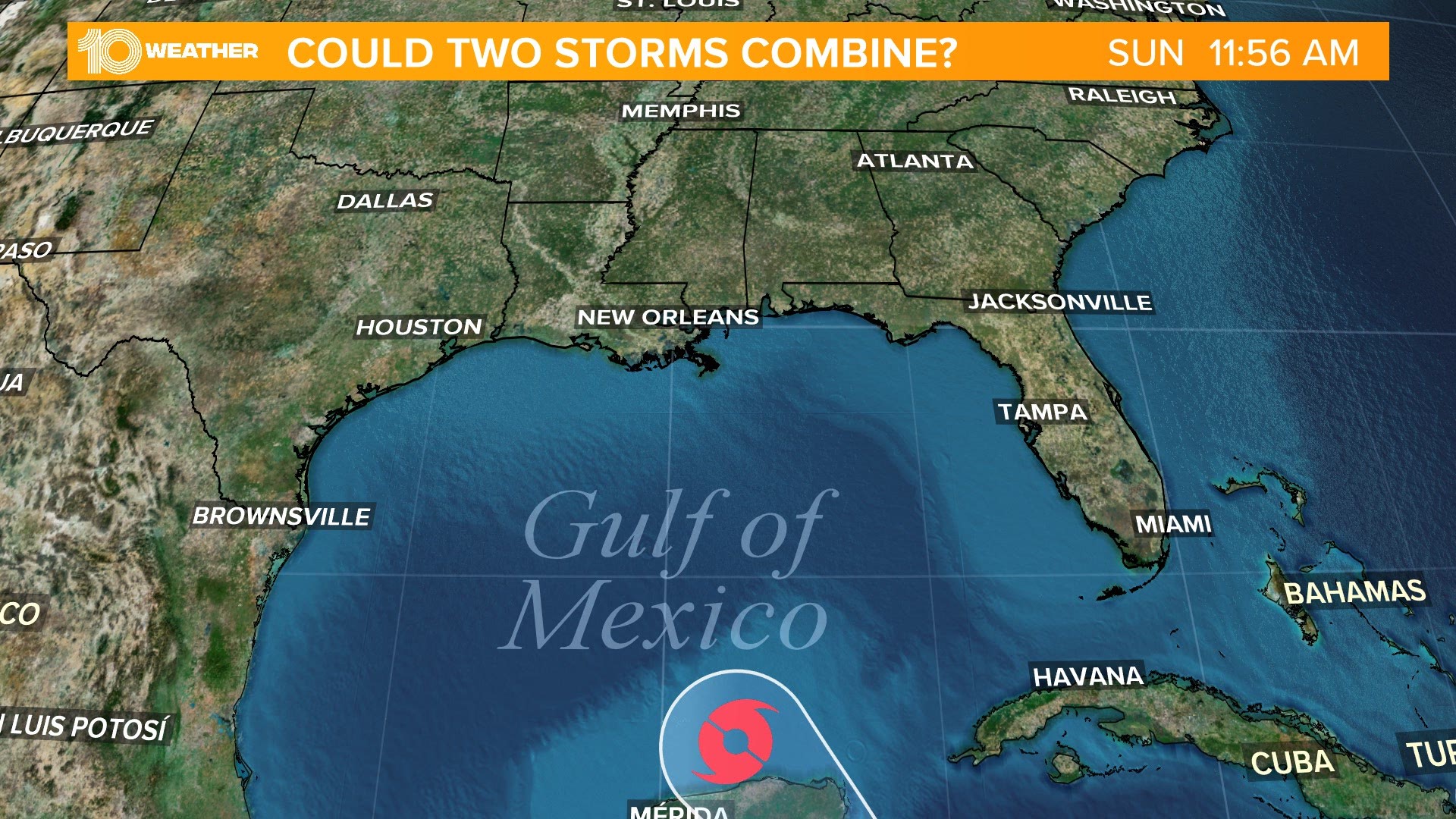ST. PETERSBURG, Fla. — The National Hurricane Center (NHC) is tracking two tropical cyclones, Tropical Storm Laura and Tropical Storm Marco, and they’re both expected to be hurricanes at some time in the Gulf of Mexico.
A similar occurrence happened in the Pacific Ocean three years ago when Hurricane Hilary and Hurricane Irwin combined. But, there's no record of it happening, specifically, with two hurricanes in the Gulf of Mexico.
In fact, there's no record of two hurricanes existing simultaneously in the Gulf of Mexico, although there is precedent for two tropical cyclones at once in that area. Basically, two tropical systems have been in the Gulf together before, but they weren't both at hurricane strength at the same time.
In the video below, 10 Tampa Bay Meteorologist Grant Gilmore explains the situation with Hurricanes Hilary and Irwin back in 2017.
What is the Fujiwhara Effect? The Fujiwhara effect happens when two tropical systems come near, then orbit each other, or possibly merge into one system. Sakuhei Fujiwhara, a Japanese meteorologist first described the effect in 1921.
The term Fujiwhara Effect refers to the interaction between two tropical weather systems.
How does it start? For the Fujiwhara Effect to take place, there must be two storms involved. They also have to be within 870 miles of each other.
What happens then? If that happens, the National Weather Service says one of three things happens when the storms come near each other. “When two hurricanes spinning in the same direction pass close enough to each other, they begin an intense dance around their common center,” the NWS website explains.
1: If one hurricane is a lot stronger than the other, the smaller one will orbit it and eventually come crashing into its vortex to be absorbed.
2: If the two storms are close to the same size, they can gravitate toward each other until they reach a common point where they either merge or they spin each other around for a while before they spin off in different directions.
3: The third possibility is that the two systems come together to form a large storm instead of two smaller ones.
Will it happen this time? The two tropical systems are not forecast by the NHC to cross paths but the distance between their respective forecast cones will be less than the 870 miles necessary, so it could happen.
►Breaking news and weather alerts: Get the free 10 Tampa Bay app
►Stay In the Know! Sign up now for the Brightside Blend Newsletter

